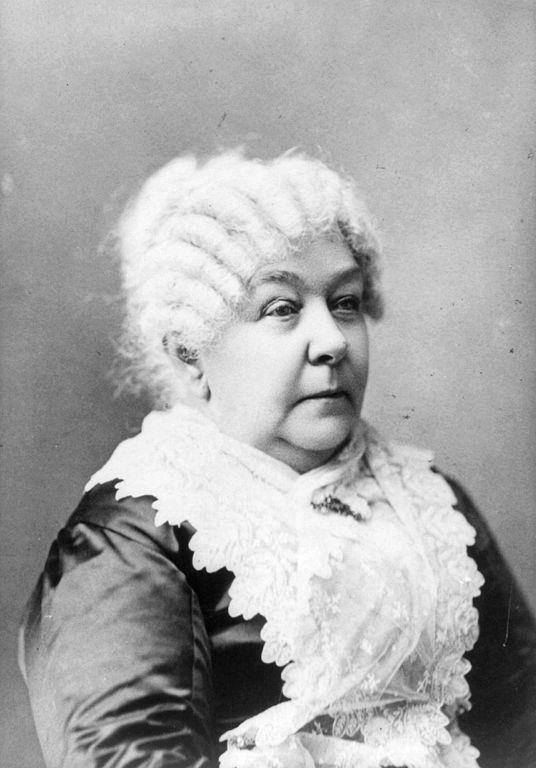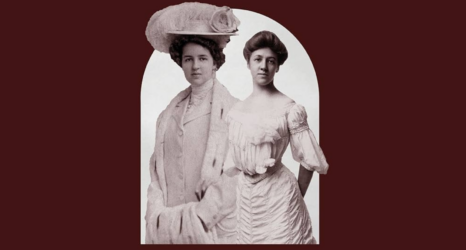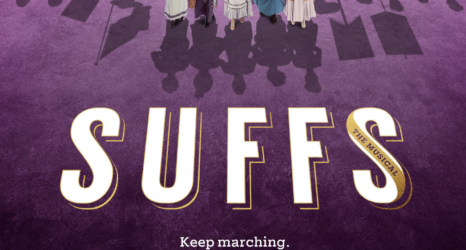
Today in Feminist History is our daily recap of the major milestones and minor advancements that shaped women’s history in the U.S.—from suffrage to Shirley Chisholm and beyond. These posts were written by, and are presented in homage to, our late staff historian and archivist, David Dismore.
May 7, 1894: A lively and well-attended mass meeting was held at New York City’s Cooper Union earlier this evening, with a reassuringly large and enthusiastic group of people willing to do whatever it takes to remove a single word from the New York State Constitution, which presently grants the right to vote to “every male citizen of the age of 21 years.”

Elizabeth Cady Stanton was given a rousing ovation before she even began speaking, and deservedly so, considering her nearly 46 years of work for suffrage. She noted just how basic a right voting should be, and the injustice of arbitrarily withholding it from entire groups:
“The State has no right to abolish the suffrage for any class of people. I remember when the enfranchisement of the Negro was the vital question of the hour. In one of the debates on the floor of the Senate, Charles Sumner said: ‘Do you tell me suffrage is a privilege? Allow that sentiment to crystallize in the hearts of the people and we have rung the death knell of American liberty.'”
Stanton then addressed a common opposition argument that only those who may be called to serve on the battlefield should have a vote. (A curious argument considering the fact that no man has ever been required to show his fitness for military service prior to casting his ballot at the polls.) She said:
“They talk of fighting. It seems to me those who have been able to meet persecution, ridicule and tears have done the best kind of fighting.”
Her daughter, Harriot Stanton Blatch, spoke next, elaborating on that point:
“It was twenty years ago, and a gentleman was talking about this same question of suffrage to my mother. ‘But Mrs. Stanton,’ he said, ‘if you have the franchise you could not protect it. You cannot fight.’ She replied: ‘Yes, I can. I should fight just as you did. I should hire someone to go in my place.’ “
The meeting had a surprisingly wide spectrum of speakers. John Milton Cornell, of the Cornell Iron Works presided, and at one point in the program he introduced American Federation of Labor president Samuel Gompers. Cornell remarked: “What men have failed to do woman has accomplished with a wave of her hand. She has brought capital and labor together on the same platform.”
Woman suffrage petitions to the State Constitutional Convention in Albany were available for signing at numerous tables, and a suffrage resolution to the Convention was presented for the audience’s approval, then unanimously adopted. It was then announced that the suffrage headquarters at 10 West 14th Street will be open all summer, and the gathering concluded with the names of those willing to have parlor meetings in their homes being taken.
The widespread support shown for suffrage tonight certainly gave everyone here hope that there will soon be a woman suffrage amendment on the Statewide ballot along with the rest of the proposed constitutional changes. If a suffrage amendment is submitted to, and then approved by, the male voters, the addition of New York as an “equal suffrage” State would be a huge victory for many reasons.
Because Congress took away the right of women in Utah Territory to vote in 1887 through the Edmunds-Tucker Act, women can presently vote in only two places: the State of Wyoming (since 1869 when it was still a Territory), and the State of Colorado since last November, when it was won through a Statewide referendum. So the addition of ANY third State would be significant in and of itself.
But because New York has the largest population of any State, it also has the biggest Congressional delegation, and having that many members of Congress who would need to win the “women’s vote” every time they run for election would be quite helpful in getting the Susan B. Anthony (woman suffrage) Amendment passed by Congress and sent to the 44 States for ratification by 33.
An East Coast win would also prove that our movement is not just a phenomenon of sparsely populated Western States, but an idea that has been endorsed by the electorate in very different States thousands of miles apart. So a major effort will be made to make November 6, 1894 a red-letter day in the history of suffrage, with many of those here tonight eager to work to assure that victory.





